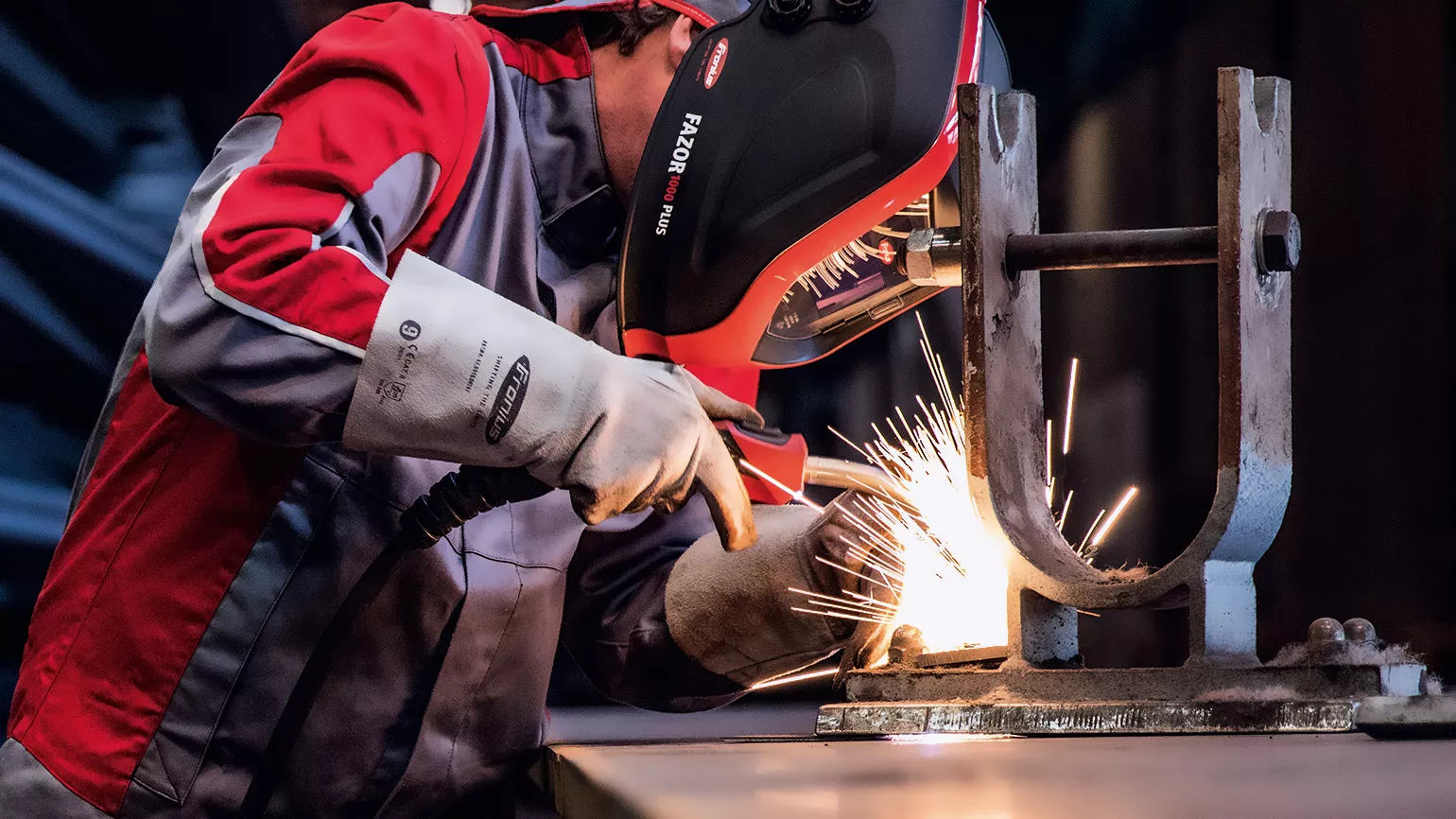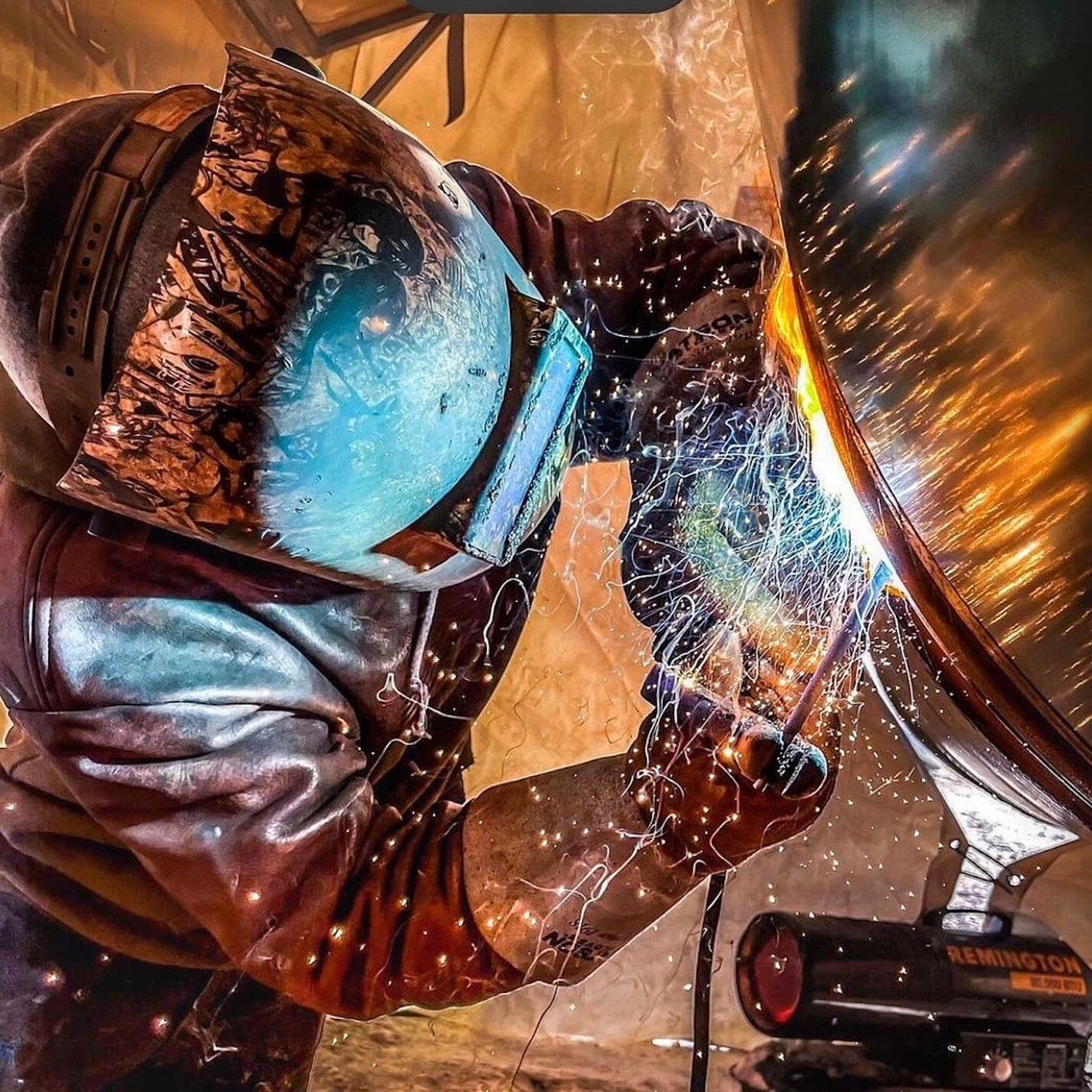Common Welding Repair Work Issues and How to Address Them Effectively
Welding fixings frequently run into a variety of problems that can threaten the honesty of the final item. Usual problems consist of inadequate infiltration, porosity, and misalignment, among others. Each issue presents special obstacles that call for details techniques for resolution. Recognizing these problems is crucial for welders intending to enhance their end results and abilities. This discussion will discover these common welding repair service problems and effective methods to address them.
Poor Penetration
Insufficient infiltration occurs when the weld metal fails to completely fuse with the base product, causing weak joints and prospective structural failures. This concern frequently stems from not enough warmth input, incorrect electrode angle, or incorrect welding rate. Welders might run into poor infiltration as a result of a mistake of the required specifications for a specific material thickness or type. Furthermore, contamination on the base product's surface can prevent effective bonding, intensifying the problem. To deal with inadequate penetration, welders must ensure appropriate settings on their tools and maintain a tidy job surface. Routine evaluation of welds is advised to determine any kind of shortages early, enabling prompt adjustments and the prevention of jeopardized architectural integrity in bonded assemblies.
Porosity
Porosity is a common defect in bonded joints that manifests as little gas bubbles caught within the weld steel. This problem can compromise the honesty of the weld, resulting in minimized stamina and potential failure under stress and anxiety. Belgrade Welding. Porosity typically arises from contamination, dampness, or improper welding strategies, which permit gases to run away into the liquified weld pool. To address porosity, welders must guarantee proper surface prep work, maintain a clean workplace, and use ideal welding parameters. In addition, choosing the right filler material and protecting gas can minimize gas entrapment. Regular inspection and screening of welds can help recognize porosity early, assuring prompt rehabilitative activities are taken, therefore preserving the top quality and reliability of the welded framework
Misalignment
Misalignment in welding can develop from various variables, including inappropriate setup and thermal development. Understanding the root triggers is important for efficient resolution. Several correction techniques are available to straighten components and guarantee structural stability.
Root causes of Misalignment
Welding imbalance typically stems from a selection of underlying issues that can endanger architectural integrity. One main cause is incorrect fit-up of components before welding, which can cause voids and irregular surface areas. Variations in thermal development during the welding procedure can also result in distortion, specifically if the products being signed up with have different coefficients of expansion. Furthermore, poor fixturing and securing might fall short to hold components safely in place, leading to motion during welding. Improperly maintained devices, consisting of welding makers and tools, might introduce inconsistencies in the weld grain, further adding to misalignment. Driver error, stemming from insufficient training or experience, can also play a significant function in developing misaligned welds.

Correction Methods Readily Available
Dealing with misalignment effectively requires a mix of rehabilitative techniques tailored to the particular problems at hand. One typical approach is the usage of jigs or fixtures to hold components in the appropriate setting during welding, ensuring consistent alignment. In addition, preheating the products can help lower distortion and boost fit-up. For considerable misalignment, mechanical adjustment strategies, such as utilizing hydraulic jacks or clamps, can be used to deal with the setting before welding. Post-weld warmth therapy might likewise be necessary to eliminate tensions caused by imbalance. Finally, careful evaluation and change during the configuration phase can protect against imbalance concerns from ending up being substantial problems, advertising a smoother welding process and boosting general architectural stability.
Distortion
Distortion is a typical challenge in welding that can occur from numerous factors, consisting of irregular heating & cooling. Understanding the root causes of distortion is crucial for executing effective avoidance techniques. Resolving this issue not just enhances architectural integrity yet also improves the total quality of the weld.
Root causes of Distortion
When based on the intense warmth of welding, materials usually undergo adjustments that can lead to distortion. This phenomenon mainly arises from thermal development and contraction during the welding procedure. As the weld location heats up, the material increases; upon air conditioning, it gets, which can develop internal stress and anxieties. Additionally, irregular home heating throughout a workpiece can intensify these anxieties, causing warping or flexing. The type of material likewise plays a considerable function; steels with varying thermal conductivity and coefficients of growth may respond in different ways, causing unforeseeable distortions. Bad joint design and poor fixturing can contribute a knockout post to misalignment during welding, boosting the likelihood of distortion. Understanding these causes is essential for reliable welding repair service and avoidance techniques.
Prevention Techniques
Efficient avoidance methods for distortion during welding focus on regulating warmth input and guaranteeing proper joint layout. Maintaining a regular warm input assists to lessen thermal growth and contraction, which can result in distortion. Using methods such as preheating the workpiece can likewise reduce the temperature slope, advertising consistent home heating. Furthermore, selecting appropriate joint layouts, such as T-joints or lap joints, can enhance stability and lower tension concentrations. Carrying out appropriate fixturing to secure the work surfaces in position further aids in maintaining placement during the welding procedure. Staggered welding series can disperse heat more uniformly, protecting against local distortion. By using these strategies, welders can greatly lower the likelihood of distortion and enhance the general high quality of their welds.
Fracturing
Fracturing is a common problem encountered in welding fixings, usually resulting from numerous factors such as incorrect cooling rates, product choice, or poor joint preparation. The occurrence of splits can greatly endanger the stability of the weld, bring about potential failures throughout operation. To resolve this problem, welders have to initially examine the origin, making sure that materials are suitable and suitably picked for the particular application. Furthermore, regulating the cooling rate during the welding process is vital; quick air conditioning can cause stress and anxiety and lead to splitting. Proper joint style and prep work also add to lessening the risk. Applying these approaches can enhance weld high quality and toughness, inevitably decreasing the possibility of fracturing in completed weldments.

Insufficient Fusion
A significant problem in welding repair services is insufficient combination, which takes place when the weld steel does not properly bond with the base product or previous weld passes - Welding. This problem welding backpack can cause weaknesses in the joint, potentially endangering the stability of the welded structure. Variables contributing to insufficient combination consist of insufficient warmth input, improper welding technique, and contamination of the surface areas being signed up with. To address this issue successfully, welders must ensure appropriate pre-weld cleaning and surface prep work, along with change their welding criteria to accomplish appropriate infiltration and combination. Normal examination during the welding process can likewise aid recognize incomplete blend early, permitting for prompt corrective procedures to improve the overall quality of the weld
Overheating
While welding repair services can enhance structural honesty, overheating provides a significant difficulty that can result in material deterioration. Too much warmth during welding can modify the mechanical residential properties of metals, leading to decreased stamina, enhanced brittleness, and bending. This sensation is specifically critical in high-stress applications where architectural dependability is vital. Identifying getting too hot can include visual assessments for staining or distortion, in addition to keeping track of temperature throughout the welding procedure. To minimize the risks connected with overheating, welders ought to use proper methods, such as read what he said controlling warmth input, adjusting traveling rate, and using suitable filler materials. Additionally, carrying out pre- and post-weld warmth treatments can help bring back product homes and boost the general high quality of the repair work, making sure long-lasting performance and safety and security.
Frequently Asked Questions
What Are the Common Indicators of a Welding Problem?

How Can I Test My Welds for Quality?
To evaluate welds for top quality, one can make use of visual assessments, ultrasonic screening, and radiographic approaches. Each strategy assures structural integrity, recognizes issues, and verifies adherence to defined standards, eventually improving the dependability of the welded joints.
What Safety and security Safety Measures Should I Take While Welding?
When welding, one should focus on safety by putting on proper personal protective tools, guaranteeing proper ventilation, securing flammable products away, maintaining a clean office, and recognizing environments to stop accidents and injuries.
Can I Repair a Weld Without Redoing the Entire Joint?
Repairing a weld without renovating the whole joint is feasible, depending on the damage (Belgrade Welding). Methods such as grinding, including filler product, or making use of a welding process can effectively attend to details problems while preserving the bordering framework
What Equipment Are Essential for Effective Welding Repairs?
Necessary tools for reliable welding fixings include a welding equipment, wire brush, grinder, protective gear, clamps, and filler materials. Each tool plays an important function in making sure top quality and security during the repair procedure. Porosity usually occurs from contamination, dampness, or incorrect welding techniques, which enable gases to leave into the molten weld swimming pool. Badly maintained devices, consisting of welding devices and tools, might introduce variances in the weld grain, further adding to misalignment. When subjected to the extreme heat of welding, products usually go through modifications that can lead to distortion. Breaking is a typical issue experienced in welding fixings, commonly resulting from different elements such as inappropriate air conditioning prices, material selection, or poor joint prep work. A substantial concern in welding fixings is incomplete blend, which takes place when the weld metal does not appropriately bond with the base material or previous weld passes.